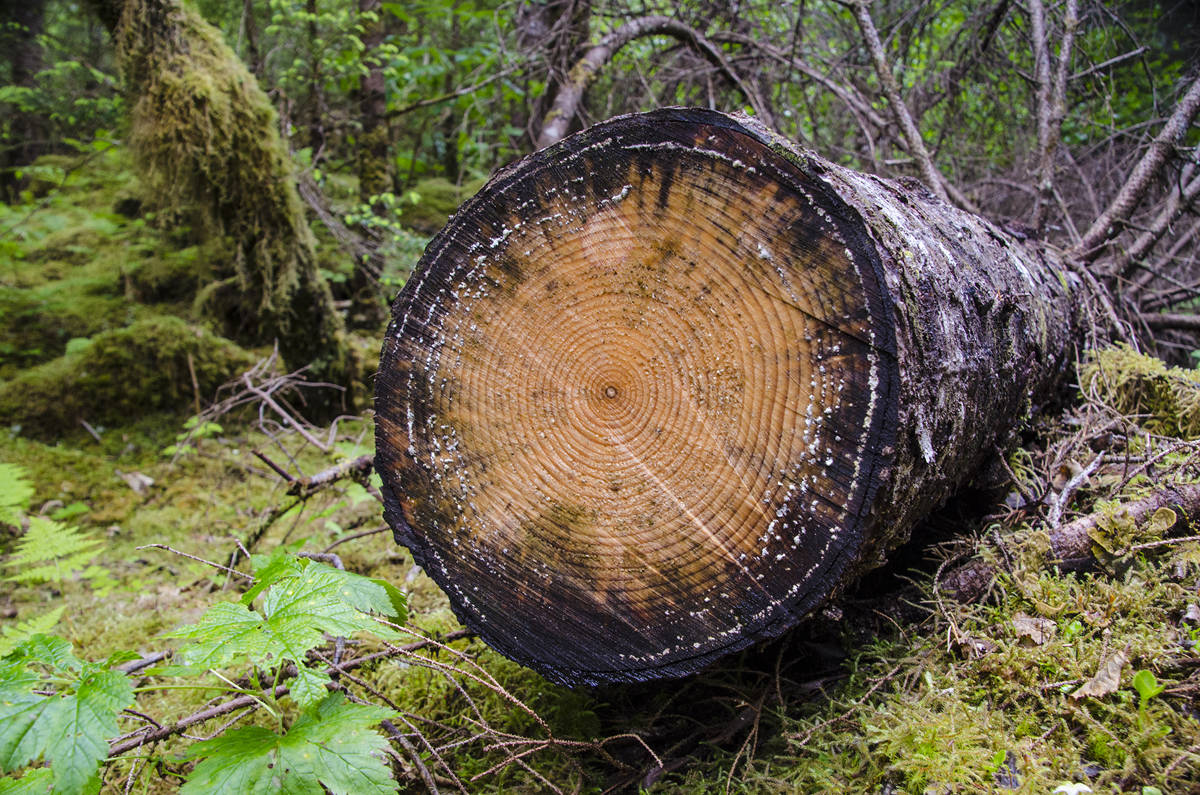A perfect storm is brewing in Southeast Alaska and all weather vanes are pointing to the Tongass National Forest — the “Amazon” of America that serves as lungs of the nation by absorbing and storing the equivalent of almost 10 percent of all the carbon retained in U.S. forests. Alaska has been in the national news with coverage of dried-up salmon spawning grounds due to unprecedented drought, and dwindling deer populations from logging old growth on Prince of Wales Island; all while the White House and Alaskan officials double down on eliminating protections for Alaska’s roadless old growth stands.
Understanding the connection between the Tongass, continued timber production, climate change and the real need for creating economic development in the state has never been more urgent. But these seemingly disparate silos offer a comprehensive solution.
While the state’s forest products industry that relies on old growth timber has sharply declined, a new one is emerging focused on transitioning out of old growth logging to reliance on Tongass young growth — 55-75-year-old trees — timber supply.
Between 2016-2018, resulting from Congressional funds secured by Sen. Lisa Murkowski, the Forest Service completed the most intensive young forest inventory ever conducted on the Tongass previously logged by the pulp and paper industry 50 years ago. Approximately 140,000 acres of these clustered, low elevation young growth acres are outside all environmentally sensitive areas and are within 800 feet of currently open forest service roads, so little road building would be required. The Forest Service inventoried over 40,000 of these acres within the Prince of Wales, Ketchikan, Petersburg and Kake supply circles. Supplemental work conducted by Juneau-based Geos Institute and the Alaska office of the Natural Resource Defense Council and shared with the Forest Service underscore an undeniable “wall of wood” opportunity to begin transitioning the Alaska timber industry based on sustainable forest management principles not evidenced in prior old growth logging, all the while preserving currently protected old growth acres for climate, subsistence and recreation benefits. Importantly, many of these abundant low-risk, accessible young growth stands, according to Forest Service inventory results, are already producing merchantable timber in per acre volumes often equal to that produced from old growth stands and have age class distributions that can support a sustainably managed forest products industry for decades to come.
The young growth stands are taller and have larger diameters than expected — meeting Tongass Advisory Council requirements for transition — and generate less than 2 perfect defect after harvest compared to 70 percent defect from old growth stands. The recent 2019 Kuiu old growth timber sale offers hard-learned lessons on why a transition to young growth needs to rapidly happen. With over 10 miles of road construction required to reach Kuiu timber supply and 70 percent defect, the project simply didn’t pencil out, and no bids were received.
Existing regional mills would need to install small log processing technology to efficiently process the new young growth supply, but capitalization for these renovations would be highly supported by the public and of keen interest to private funding sectors. And after 3 years of peer-reviewed project design development and field work undertaken by the Forest Service Research Station on Tongass young growth, the next step is to establish a Young Growth Wood Quality Pilot manufacturing line that would process young timber to test for lumber grade recovery and market demand for manufactured products
Tongass and Sealaska Timber Corporation young growth logs have been sold to export markets for almost a decade.
Taking a page from Sealaska’s playbook, the 9 million acres of old growth targeted for logging in the Alaska Roadless Rule could be set aside for permanent protection and accumulating atmospheric carbon stores. Payments for those forest carbon stores could come from heavy carbon emitters such as the cruise ships that now enter and launch from Alaskan shores. Recent 2019 investigative reports show that each of these ships emits as much particulate matter to the atmosphere as one million cars every day.
For Alaska a clear choice exists on the Tongass: navigate a new course with an abundant young growth “wall of wood” or continue the old growth course towards conflict and litigation. That perfect storm is now.
• Catherine M. Mater is President of Oregon-based Mater Ltd, an 80-yr old forest products engineering and market research firm servicing world-wide clients. She is the lead investigator and author on the Tongass Young Growth Transition Project.
•Dominick A. DellaSala, is an award-winning scientist at the Geos Institute (Ashland, Juneau) with over 200 publications, including “Temperate and Boreal Rainforests of the World: Ecology and Conservation.”

